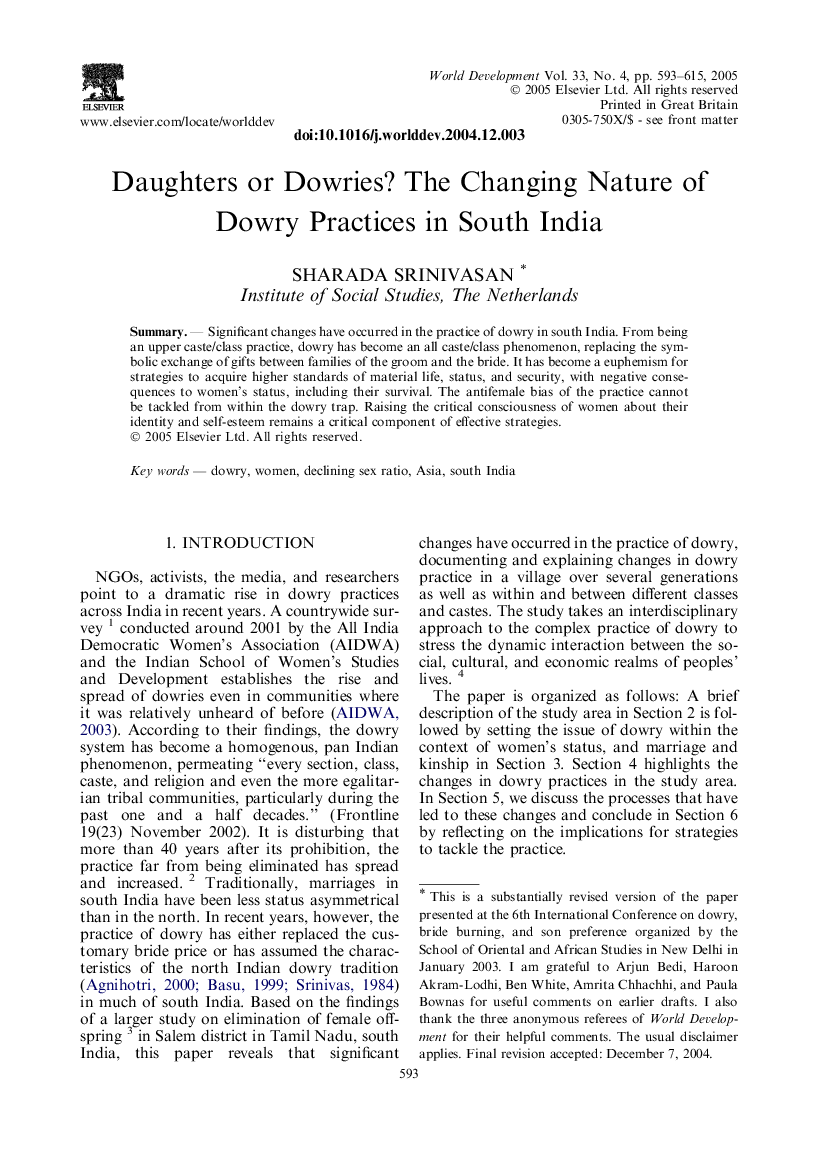| Article ID | Journal | Published Year | Pages | File Type |
|---|---|---|---|---|
| 10486682 | World Development | 2005 | 23 Pages |
Abstract
Significant changes have occurred in the practice of dowry in south India. From being an upper caste/class practice, dowry has become an all caste/class phenomenon, replacing the symbolic exchange of gifts between families of the groom and the bride. It has become a euphemism for strategies to acquire higher standards of material life, status, and security, with negative consequences to women's status, including their survival. The antifemale bias of the practice cannot be tackled from within the dowry trap. Raising the critical consciousness of women about their identity and self-esteem remains a critical component of effective strategies.
Keywords
Related Topics
Social Sciences and Humanities
Economics, Econometrics and Finance
Economics and Econometrics
Authors
Sharada Srinivasan,
